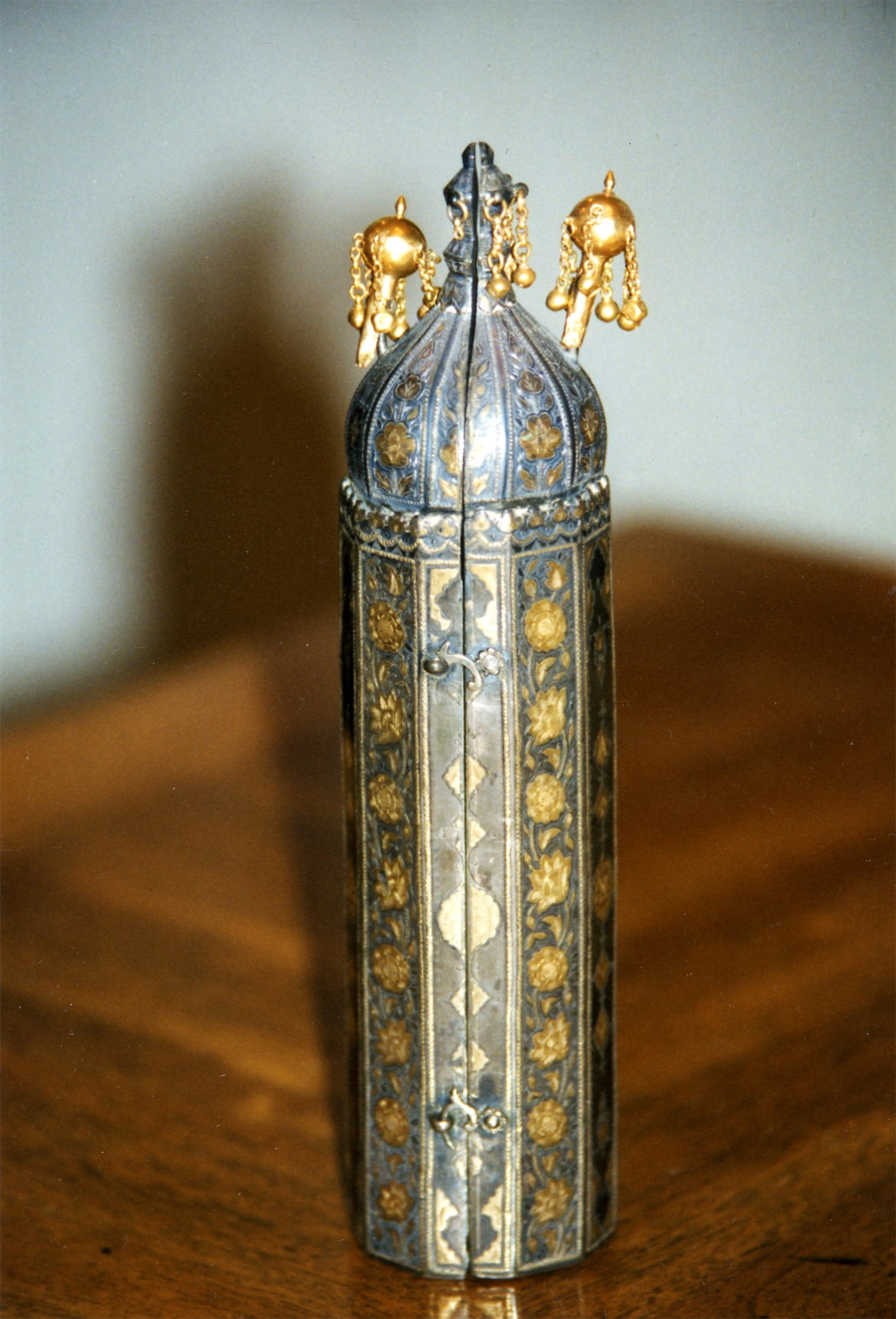This ornately encased Torah scroll, an extraordinary gift of Rabbi Ezekiel N. and Margaret Musleah, represents the many travels of Iraqi Jews during the 19th and 20th centuries. The integration of Iraq into the modern economy in the 19th century brought new trading opportunities for Iraqi Jews. British trade provided the network through which they subsequently established satellite communities in Bombay, Calcutta, Shanghai, and Hong Kong. Affluent families from these Indian-Iraqi- Jewish communities made financial contributions to support various synagogues and schools in Baghdad. They kept the Baghdadi tradition alive in Southeast Asia (in terms of ritual and daily practice), and are still referred to as "Baghdadis" by Jews and non-Jews alike.
This community also established a print industry that published books and journals in Judeo-Arabic for a Baghdadi Jewish readership. Jews in Baghdad often traveled to the East to serve as rabbis, and cantors, and to provide services the local communities needed, while written products from India and Hong Kong often traveled to Baghdad. Hakham Rav Mordecai Shindookh (1770-1852), the scribe and religious authority who specially created this visionary, diminutive Torah scroll to be used in the future by the Messiah during his travels throughout the world, was a prominent representative of this Baghdadi Jewish community in Calcutta. Rabbi Ezekiel N. and Margaret Musleah, now living in Philadelphia and formerly of Calcutta, are descendants of Baghdadi rabbinic scholars, including Hakham Rav Shindookh who was a progenitor of Margaret (nee Shindookh) Musleah. The Musleah family donated this precious family heirloom, kept in the family for six generations, to the Library at the Katz Center on the first day of Hanukkah in December of 2011..
